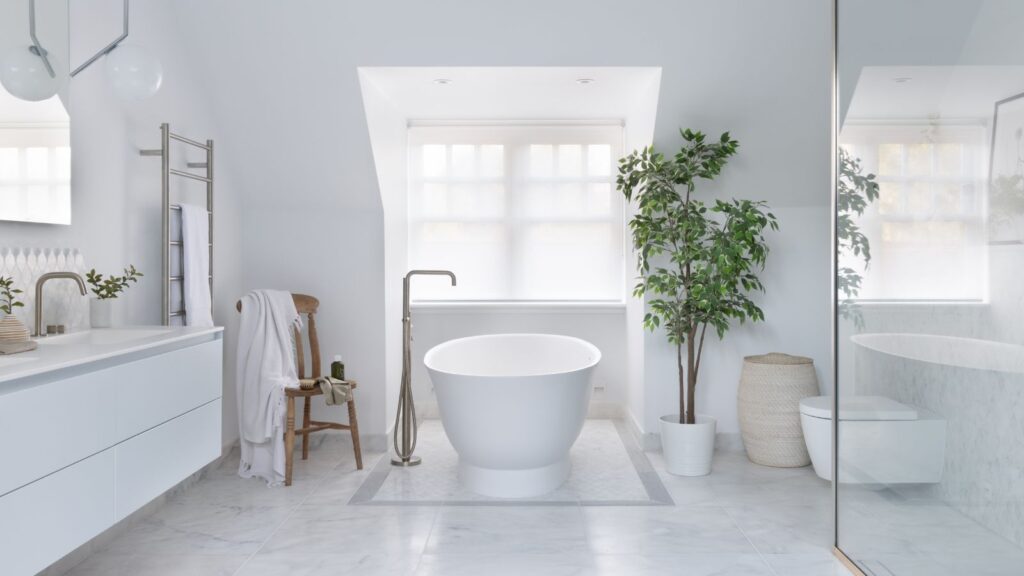
Green Materials for Bathrooms: Sustainable Choices for Your Home
In recent years, the importance of incorporating green materials for bathrooms has become increasingly apparent. Not only are these materials beneficial for the environment, but they also contribute to healthier living spaces. As awareness grows about the impact of our choices on the planet, homeowners are turning to sustainable bathroom solutions to make their homes eco-friendly.
When planning a bathroom renovation, selecting the right materials can significantly reduce your carbon footprint. From fixtures to flooring, there are numerous options to consider that align with sustainable living principles. In this article, we will explore various eco-friendly choices that can transform your bathroom into a green oasis.

Understanding the Benefits of Green Materials
Choosing green materials not only helps the environment but also provides several benefits for homeowners. These materials are often more durable and require less maintenance, leading to long-term savings. Additionally, they can improve indoor air quality, making your home healthier and more comfortable.
Reducing Environmental Impact
By opting for sustainable materials, you can significantly reduce the environmental impact of your bathroom. Materials like bamboo, recycled glass, and reclaimed wood are renewable and require less energy to produce. This helps in conserving natural resources and reducing waste.
For more information on sustainable bathroom remodeling, you can explore expert insights and tips.
Improving Indoor Air Quality
Many traditional bathroom materials emit volatile organic compounds (VOCs) that can harm indoor air quality. By choosing low-VOC or VOC-free materials, such as natural stone or clay tiles, you can create a healthier environment for you and your family.
Eco-Friendly Flooring Options
When it comes to flooring, there are several green options to consider. Cork and bamboo are popular choices due to their sustainability and durability. Both materials are harvested from renewable sources and offer natural resistance to moisture, making them ideal for bathrooms.
Cork Flooring
Cork is a sustainable material harvested from the bark of cork oak trees. It is soft underfoot, provides excellent insulation, and is naturally resistant to mold and mildew. Additionally, cork flooring is available in various colors and finishes, making it a versatile choice for any bathroom design.
Bamboo Flooring
Bamboo is another eco-friendly flooring option that is gaining popularity. It is a fast-growing grass that can be harvested without harming the environment. Bamboo flooring is strong, water-resistant, and adds a warm, natural look to any bathroom.
Sustainable Fixtures and Fittings
In addition to flooring, selecting sustainable fixtures and fittings is essential for creating a green bathroom. Water-saving faucets, showerheads, and toilets can significantly reduce water consumption, helping you save on utility bills while conserving water.
Water-Saving Faucets
Installing water-saving faucets is a simple yet effective way to reduce water usage. These faucets use aerators to mix air with water, maintaining pressure while using less water. Some models also feature motion sensors for added convenience and efficiency.
Low-Flow Toilets
Low-flow toilets are designed to use less water per flush compared to traditional models. Dual-flush toilets offer the option of a full or half flush, providing further water savings. By replacing an old toilet with a low-flow model, you can save thousands of gallons of water each year.
Eco-Friendly Wall and Ceiling Materials
When it comes to walls and ceilings, there are several eco-friendly materials to choose from. Recycled glass tiles, clay plaster, and reclaimed wood are excellent options that add character and sustainability to your bathroom.
Recycled Glass Tiles
Recycled glass tiles are made from post-consumer and post-industrial glass, reducing the need for virgin materials. They are available in a wide range of colors and patterns, making them a stylish and sustainable choice for bathroom walls.
Clay Plaster
Clay plaster is a natural and breathable material that helps regulate humidity and improve indoor air quality. It is available in various textures and finishes, offering a unique and eco-friendly alternative to conventional wall coverings.
The Role of Lighting in Green Bathrooms
Lighting plays a crucial role in creating a sustainable bathroom. By choosing energy-efficient lighting solutions, you can reduce energy consumption and create a warm and inviting atmosphere.
LED Lighting
LED lights are an energy-efficient alternative to traditional incandescent bulbs. They consume less electricity, have a longer lifespan, and emit less heat, making them ideal for bathroom settings.
For more smart home solutions and energy-saving tips, explore our article on smart home sensors.
Conclusion
Incorporating green materials for bathrooms is a responsible and rewarding choice for homeowners. Not only do these materials contribute to a healthier environment, but they also enhance the overall aesthetic and functionality of your bathroom. By making informed choices, you can create a sustainable and beautiful space that reflects your commitment to the planet.
Explore more about smart home solutions that complement eco-friendly living.

FAQs
What are the benefits of using green materials in bathrooms?
Green materials offer several benefits, including reduced environmental impact, improved indoor air quality, and long-term cost savings. They are often more durable and require less maintenance, making them an excellent choice for sustainable living.
How can I make my bathroom more energy-efficient?
To make your bathroom more energy-efficient, consider installing water-saving fixtures, using LED lighting, and choosing energy-efficient appliances. These changes can significantly reduce your water and energy consumption.
Are eco-friendly bathroom materials more expensive?
While some eco-friendly materials may have a higher upfront cost, they often provide long-term savings through reduced maintenance and energy costs. Additionally, the environmental benefits make them a worthwhile investment for homeowners committed to sustainability.
This article contains affiliate links. We may earn a commission at no extra cost to you.